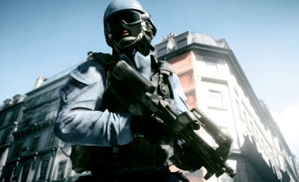Battelle, the world's largest nonprofit research and development organization, is partnering with the Johns Hopkins Applied Physics Laboratory, the Charles Stark Draper Laboratory of Massachusetts, and Aegis Technologies of Virginia to develop an "Iron Man" military suit, a Battelle spokesperson recently confirmed. The concept for this Tactical Assault Light Operator Suit, or TALOS, has been in the works for a few months. In September 2013, the U.S. Special Operations Command issued a special notice inviting related professionals to submit low Technology Readiness Level (TRL) demonstrations of their research. Those encouraged to participate may be involved with industry labs, academia, a part of a government lab or individuals pursuing related sciences in their life after service.
The USSOC had a few suggestions in mind for technological developers, including full-body ballistic armor protection, Situational Awareness (SA) technology, and a powered exoskeleton that would improve agility. The USSOC invited select respondents to MacDill Air Force Base in Tampa, Florida, in October.
The 2014 Special Operations Forces Industry Conference and exhibition held May 20-22 in Tampa showcased the new technologies Battelle has been developing for TALOS. Live Science news met with the vice president for the special operations market group at Battelle, John Folkerts.
"How do you protect against direct action engagement?" he asked. "To protect troops in combat, soldiers must have access to better armor, better protection and better communication."
Though the exact specifics of the suit are set to be released between 2016 and 2018 according to the source, there are some hints of brewing technological advances. NPR spoke with professors Norman Wagner from the University of Delaware and Gareth McKinley from MIT when the technology was in its first stages.
"We're starting with the material that's almost a liquid ceramic that transitions when you hit it hard," said Wagner. "These particles organize themselves quickly, locally in a way that they can't flow anymore and they become like a solid."
This means that the suit would provide better protection after being hit by a bullet, but McKinley wants to go further. NPR noted that he believes the suit could include attachable arm and leg frames that use hydraulics to improve soldiers' speed and agility. The USSOC also envisions that the suit would include a computer similar to Google Glass to enhance battlefield vision, updating soldiers on enemy whereabouts or even chemical presence. A comparable system for Google Glass called Tactical Augmented Reality software is already in the works by Battelle.

